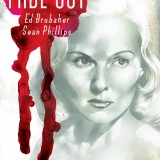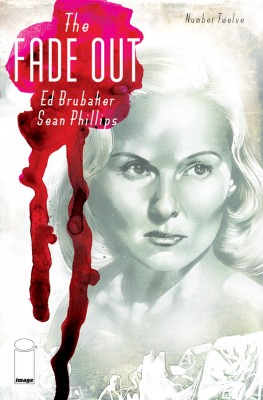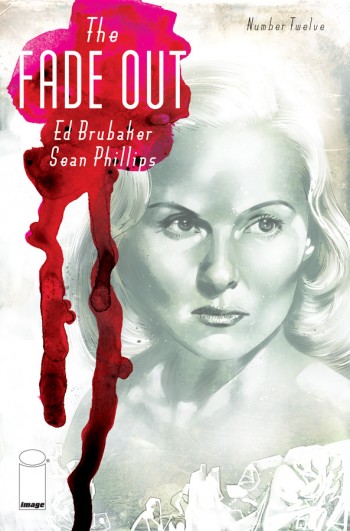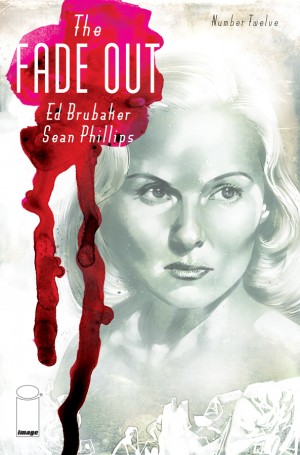
REVIEW: Satisfying and yet infuriating end on ‘The Fade Out #12′
There is no business like show business. That is how Ed Brubaker and Sean Phillips’ The Fade Out #12 turns out. As the writer himself says over and over again, The Fade Out is a mini-series and this twelfth chapter is the climatic finale that ties many loose-ends and even answers the question that rooted from […]
 There is no business like show business. That is how Ed Brubaker and Sean Phillips’ The Fade Out #12 turns out. As the writer himself says over and over again, The Fade Out is a mini-series and this twelfth chapter is the climatic finale that ties many loose-ends and even answers the question that rooted from the first issue. Unlike many present writers who can write a great journey or sojourn tale but ending up either a lame or a disappointing story, Brubaker remains sharp as ever by giving us an ending that is both satisfying but at the same time, infuriating. A true master of suspense-and-crime storytelling, he knows life is everything but a fairy tale. Not everything obvious is what it seems at all. The concepts of the classic dualism — good-and-evil, heroes-and-villains, white-and-black — are just mere abstracts or rhetoric. For Ed, life is colored with grey, full of ambiguity and unfavorable compromises. This ending encapsulates what a great Brubaker end-tale really is—truly an uncompromising tale of noir and twists.
There is no business like show business. That is how Ed Brubaker and Sean Phillips’ The Fade Out #12 turns out. As the writer himself says over and over again, The Fade Out is a mini-series and this twelfth chapter is the climatic finale that ties many loose-ends and even answers the question that rooted from the first issue. Unlike many present writers who can write a great journey or sojourn tale but ending up either a lame or a disappointing story, Brubaker remains sharp as ever by giving us an ending that is both satisfying but at the same time, infuriating. A true master of suspense-and-crime storytelling, he knows life is everything but a fairy tale. Not everything obvious is what it seems at all. The concepts of the classic dualism — good-and-evil, heroes-and-villains, white-and-black — are just mere abstracts or rhetoric. For Ed, life is colored with grey, full of ambiguity and unfavorable compromises. This ending encapsulates what a great Brubaker end-tale really is—truly an uncompromising tale of noir and twists.
True Brubaker fans, readers and aficionados really know what to expect in this finale. Re-reading and reflecting on his epic runs in Criminal, Fatale, Sleeper, and Captain America, I should expect the unexpected. But he continues to exceed our expectations, further twisting the already twisted but engaging crime-and-suspense genre with his command of gritty and dark scripts that are seemingly obvious in first reading but in actuality, these are mere façades of the real situations. No wonder why The Fade Out team displays first the cast of characters — dead or alive — to somehow guide the readers who or what they are really missing in this whodunit story that touches multiple themes of betrayals, manipulations, witch-hunting, deceptions, inside jobs, love, sex, memories, and even racism. And this finale is no exception either; the writer still places red herrings in some strategic portions along the way, and has us enjoy a deliberate anti-climatic quasi-ending that eventually literally “fade out” in the last part of the story. What makes this even memorable is the interaction between the enforcer and the crusader, where the former digs deep on the latter’s background and advised the fellow to live with it, “soldiered” up. Since Ed is a product of a military upbringing and is aware of some of the soldiers’ mindsets, he brings up that exchange to tell something about real life—justice is anything but equal.
Sean Phillips draws some of the finest illustrations here, perhaps due to the significance of this series. Most panels are focused on the facial expressions of the main characters involved to highlight the repercussions, if not the consequences, they could have faced. Even the illustrations and interpretations of the unexpected twists here are done expertly that continues his niche as one of the best noir and suspense graphic artists around. Some of the silent pages presented in this issue demonstrate his command of sequential paneling and the right angular perspectives to make the scenes credible, grounded, and authentically genuine in spirit of the noir visual storytelling. His painstaking detailed artwork of the theater’s interiors, the 1950s architectural establishments and their facades and insides are almost historically accurate to show readers the piece of showbiz and entertainment history and the portion of the zeitgeist of that era as well.
If there are some complaints I can highlight here, there are only three things. First, I know Sean draws beautiful women even in the bloodiest moments, but two of his illustrations of the deceased starlet (and the focal point of the entire murder mystery series) looks so awkwardly aged, if not so unglamorously portrayed due to some disproportionate facial portrayals. And, its delay actually diminishes the overall impact of the story because the ending sets during Christmas, and Brubaker has a knack of narrating tales set in the Yuletide season. Just read some of his Captain America, Criminal, and Sleeper that set place during the holidays and see how good he tells noir and action packed narrations. In addition, that dreaded “mature” content may possibly deny some younger readers the awesomeness this creative team brings to the table in terms of great crime-and-suspense and historical graphic storytelling.
Regardless, The Fade Out #12 fulfills Brubaker and Phillips’ promise of tying many loose-ends of this exciting and intelligent tale of murder, betrayal, showbiz business, love, and history. The ending may or may not satisfy some of the readers out there, but that is what the creative team wants us to understand after said and done, not everything ends with a sunset victory. Reading Brubaker’s works is like learning something more important than what we mostly learn from schools — real life is not a walk in the park. GREAT READ!
The Fade Out #12 will be released this week. Grab a copy at your nearest local comic book stores.


















